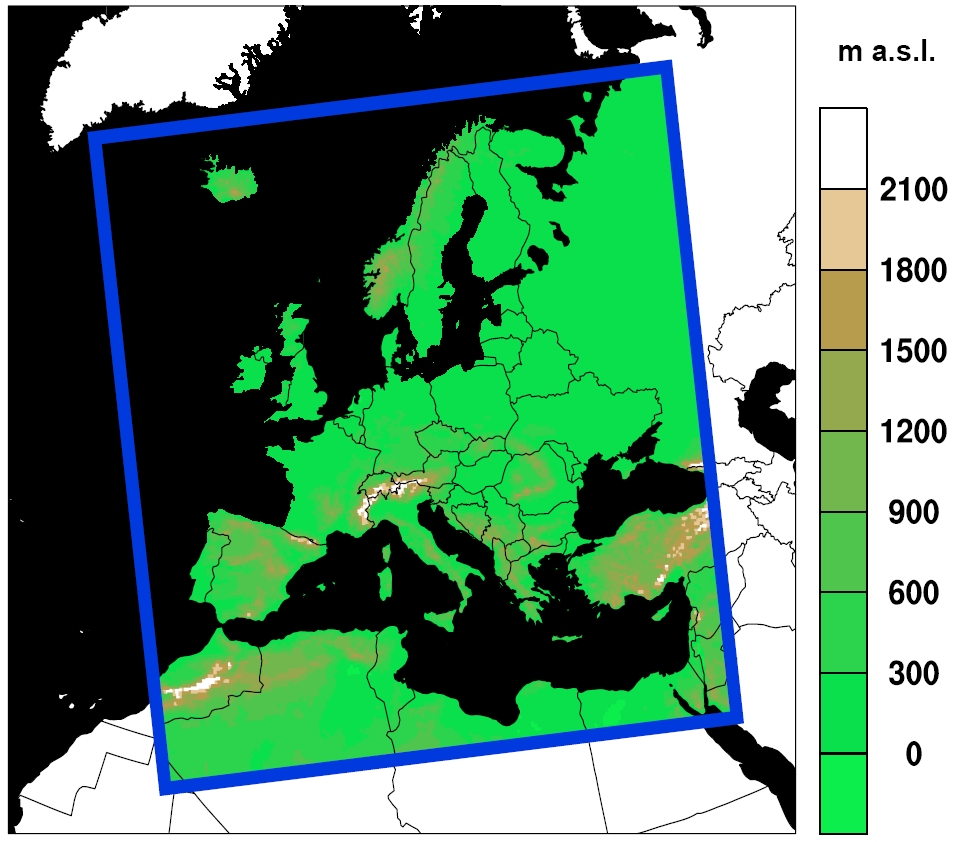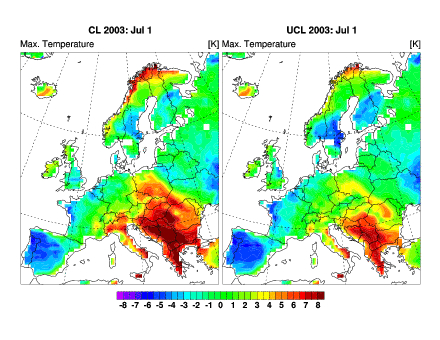Climate variability and climate change in the European and Alpine regions

This study seeks fundamental understanding of the key atmospheric and hydrological processes which shape the European and Alpine climate (Fig. 1) in response to the larger scale atmospheric forcing. Emphasis is not only set upon present-day but also on future climate and climate change. The main thrust of our recent work is dedicated towards better understanding and simulating the European summer climate, and towards assessing its sensitivity with respect to anthropogenic forcing. Particular consideration is given to the role of continental-scale land-surface processes and their interactions with the water cycle. To fulfill these aims, the study employs (i) analysis of Alpine and European-scale data sets from observations and climate simulations, (ii) process studies, and (iii) downscaling studies using a sophisticated high-resolution regional climate model (the external pageCLMcall_made; see integration domain and topography in Fig. 1).
Summer heat waves

Recently, we have focused on the summer heat wave of 2003. The record-breaking 2003 heat wave increased mortality by around 35,000 heat-related deaths across Europe and resulted in large financial losses due to crop shortfall and forest fires. We have shown that the occurrence of such an event can only be explained by an increase in interannual temperature variability in a future climate (Schär et al. 2004). We have also analysed in detail the contribution of soil moisture-atmosphere interactions to the 2003 European summer heat wave (see Figs. 2 and 3). We found that soil moisture anomalies had a substantial impact upon the strength of the 2003 heat wave and also affected the extent of the associated geopotential height anomaly (Fischer et al. 2007a). More generally, we could demonstrate that during four simulated heat waves, soil moisture-temperature interactions increase the heat wave duration and account for typically 50-80% of the number of hot summer days (see Fischer et al. 2007b and here for more details).
Moist convection and cloud-resolving modelling

Another important aspect of the summer climate concerns moist convection, as moist convection contributes to a large portion of the summer precipitation over Europe. Due to the smaller scale of convective clouds (O(1-10) km) as compared to the grid spacing currently used in regional climate models (around 25 km), moist convection needs to be parameterized. The latter parameterizations are a source of large errors and uncertainties for the simulation of present and future climates. For instance, precipitation peaks too early in the models as compared to observations. Recently we have begun to investigate reasons for this behavior. Also, in order to better resolve convective processes, we are moving towards climate simulations integrated on a convection-permitting grid of about 2.2 km. Such mesh sizes allow a partly explicit resolution of the convective processes and are thus expected to improve climate simulations. Cloud-resolving climate simulations have only become recently feasible due to their high computational costs and their application is still fairly limited in space and time.
Scenarios
We have been producing and analyzing decadal regional climate simulations spanning the time period 1950-2050 as part of the EU project ENSEMBLES. We validate our simulations from 1950-present against high resolution gridded datasets for Europe and the Alpine regions. This allows us to (i) better understand the uncertainty of the present-day climate, (ii) better estimate the uncertainty in future climate and (iii) improve the representation of physical processes in our climate models (see e.g. Jacob et al. 2007, Deque et al. 2007). Most of our regional climate model data are available free for download. Please visit our dedicated scenario webpage for more information.
National and international cooperation
external pageNCCR Climatecall_made : Project P2.2 RECLIM
external pageENSEMBLEScall_made
ALPS-Climate
Further reading
Deque, M., D. P. Rowell, D. Luthi, F. Giorgi, J. H. Christensen, B. Rockel, D. Jacob, E. Kjellstrom, M. de Castro, and B. van den Hurk, 2007: An intercomparison of regional climate simulations for Europe: assessing uncertainties in model projections. Climatic Change, 81, 53-70.
Fischer, E.M., and C. Schär, 2008: Future changes in daily summer temperature variability:driving processes and role for temperature extremes. Climate Dynamics, 10.1007/s00382-008-0473-8
Fischer E.M., S.I. Seneviratne, P.L. Vidale, D. Lüthi and C. Schär, 2007a: Soil moisture - atmosphere interactions during the 2003 European summer heat wave. J. Climate, 20, 5081-5099.
Fischer, E. M., S. I. Seneviratne, D. Lüthi, and C. Schär, 2007b: Contribution of land-atmosphere coupling to recent European summer heat waves, Geophys. Res. Lett., 34, L06707, doi:10.1029/2006GL029068.
Jacob, D., L. Barring, O. B. Christensen, J. H. Christensen, M. de Castro, M. Deque, F. Giorgi, S. Hagemann, G. Lenderink, B. Rockel, E. Sanchez, C. Schär, S. I. Seneviratne, S. Somot, A. van Ulden, and B. van den Hurk, 2007: An inter-comparison of regional climate models for Europe: model performance in present-day climate. Climatic change, 81, 31-52.
Schär, C., P.L. Vidale, D. Lüthi, C. Frei, C. Häberli, M. Liniger and C. Appenzeller, 2004: The role of increasing temperature variability in European summer heat waves. Nature, 427, 332-336
Seneviratne, S.I., D. Lüthi, M. Litschi and C. Schär, 2006: Land-atmosphere coupling and climate change in Europe. Nature, 443, 205-209
